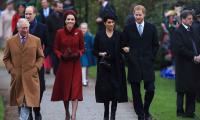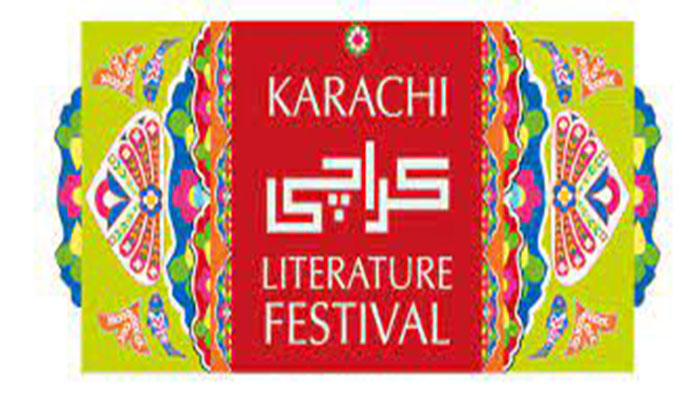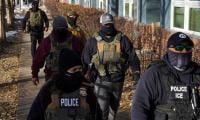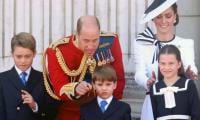Of Lyari, its indigenous culture and rich literature
The town of Lyari situated in the south of Karachi has been a locality of hardworking people and labourers who played a pivotal role in the city’s social, political and cultural development.
This was said on Saturday at a session on the second day of the 12th Karachi Literature Festival. The online session titled ‘Lyari aur Shair o Adab’ was moderated by a lawyer and rights activist from Lyari, Waheed Noor, who also composes poetry in Urdu and Balochi.
Highlighting how Lyari had inspired important writers, he said the setting of Muhammad Khalid Akhtar’s famous satirical novella ‘Chakiwara Mein Wisal’ was based in Lyari. He added that great humour writer and poet Ibne Insha had his office in Lyari and the great Faiz Ahmed Faiz had served as the principal in Lyari’s Abdullah Haroon College.
Speaking on the cascading effects of Balochi language on Lyari’s literature, Zahida Raeesi, MPhil scholar in the University of Balochistan, Quetta, and expert on Balochi language, said that whenever one talked about Lyari, the Baloch had to be part of the discussion. “Baloch in Lyari have been living since the 15th century till now,” she said, adding that deven when Karachi was part of Kalat and when the city was merged with Sindh, Balochi language remained an essential feature of Lyari.
As for the contemporary Balochi literature, she said it initiated from Lyari. Initially, she said, literature produced from Lyari was only poetry and the genre of ‘ghazal’ was introduced to the Balochi literature from there.
She mentioned the first Balochi ghazal poet, Malang Shah, who belonged to Lyari and added that his fourth generation was still continuing his legacy till date. She also named Khalil Faqeer whose poems based on Sufism were also famous in Balochi.
By the year 1949, she said, serious work on Balochi literature initiated. Maulana Kher Muhammad Nadvi opened the Balochi Education Centre in Lyari where music and poetry recitation programmes were held. He also requested then federal government to allow programmes in Radio Pakistan in Balochi language.
In 1951, he started a monthly magazine named Oman and invited writers and poets to write pieces for it in Balochi or translate works in other languages into Balochi. The magazine was in Balochi as well as Urdu language.
Oman, she explained, introduced various poets such as Maulvi Muhammad Hussain, Muhammad Ishq Shamim, Abdul Khaliq Afaqi, Kher Muhammad Nadvi and many others.
Zahida shared that such efforts resulted in literature in Balochi in different genres of prose and poetry, and people started writing novels in Balochi. She added that Azad Jamal Uddin started his magazine Mahtak Balochi from Lyari’s Lea Market.
The only difference between Mahtak Balochi and Oman was that Oman was in two languages while Mahtak Balochi was only in Balochi language and it also introduced criticism in Balochi literature along with Balochi lexigraphy. Bimonthly Zamana also started publishing from Lyari in the same era.
Zahida then spoke about first female Balochi writer Banul Dashtyari who came into limelight in that era. According to the speaker, Banul composed many ghazals in Balochi.
Speaking on the difference between poems in Balochi composed by poets from Balochistan and those from Lyari, poet Ishaque Khamosh, who is also the press secretary of the Balochi Music Promoters Society, said that contemporary poems in Balochi initiated from Lyari.
After 1950s, he said, Balochi poems gained popularity through the Radio. In 1932, he shared, Muhaammad Umer Sarbazi translated Quran into Balochi.
Ustad Shafi and Ustad Sattar made poets write Balochi songs after which prominent Balochi singers emerged. Nadvi, he said, wanted to open schools in Dhobi Ghat and other areas adjoining Lyari for the purpose of teaching Balochi.
After the Oman magazine, he said, Nadvi started publishing the Soghaat magazine which helped connect Balochistan from Karachi in many ways.
The moderator of the session then asked writer and poet in Urdu and Balochi Imran Saqib, who has also translated Hamida Khuhro’s ‘A Children’s History of Balochistan’ into Balochi, if he found any difference between the
contemporary literature produced from the city’s other areas such as Nazimabad and that produced from Lyari.
“Karachi’s birth is from Lyari,” Saqib responded. “Lyari represents Karachi’s indigenous culture and literature.”
He asserted that Lyari’s literature was very deep as it also spoke of Karachi’s past. The other areas of the city, he said, developed later and thus they did not represent the indigenous culture of the city.
Wahid Comrade, meanwhile, shared how non-Balochis also contributed to the rich literature and history of Lyari. Parveen Shakir, he pointed out, was born in Lyari’s Chakiwara area. Shaukat Siddiqui, he said, wrote his famous novel ‘Khuda ki Basti’ in Lyari. The first Sindhi newspaper, according to him, was also published from Lyari.
-
 First Poll Since King Charles' Action Against Andrew Reveals Royal Family's Public Standing
First Poll Since King Charles' Action Against Andrew Reveals Royal Family's Public Standing -
 Blake Lively Strengthens Legal Team Ahead Of Justin Baldoni Trial
Blake Lively Strengthens Legal Team Ahead Of Justin Baldoni Trial -
 'Back To School!': Palace Shares Details Of Princess Anne's Latest Engagements
'Back To School!': Palace Shares Details Of Princess Anne's Latest Engagements -
 Paul Mescal Clarifies Acting Break Comment As He Teases Paul McCartney Role
Paul Mescal Clarifies Acting Break Comment As He Teases Paul McCartney Role -
 Kate Middleton's Unexpected Style Of Arrival At Solo Outing Goes Viral
Kate Middleton's Unexpected Style Of Arrival At Solo Outing Goes Viral -
 Why ‘X’ Is Down? Thousands Report Twitter Outage: Here’s What You Can Do
Why ‘X’ Is Down? Thousands Report Twitter Outage: Here’s What You Can Do -
 Florida Man Held After Alleged Nail-scattering On Busy Intersections
Florida Man Held After Alleged Nail-scattering On Busy Intersections -
 Valeria Nicov: Sean Penn's Athletic Girlfriend Raises Eyebrows With Latest Photos
Valeria Nicov: Sean Penn's Athletic Girlfriend Raises Eyebrows With Latest Photos -
 Sharon Stone Lashes Out At Fellow Award Show Attendees After Stealing Accusations
Sharon Stone Lashes Out At Fellow Award Show Attendees After Stealing Accusations -
 Gwyneth Paltrow Reveals Real Reason She Said Yes To 'Marty Supreme'
Gwyneth Paltrow Reveals Real Reason She Said Yes To 'Marty Supreme' -
 King Charles Says He And Queen Camilla Stand With People Of Ukraine
King Charles Says He And Queen Camilla Stand With People Of Ukraine -
 Ben Affleck Argues In Favour Of His Shirtless Scene In 'The Rip'
Ben Affleck Argues In Favour Of His Shirtless Scene In 'The Rip' -
 Mississippi Postal Worker Arrested After Complaints Of Marijuana Odour In Letters
Mississippi Postal Worker Arrested After Complaints Of Marijuana Odour In Letters -
 Canada, China Lock Initial Trade Deal On ‘EV,Canola’ To Strengthen Ties: What To Expect Next?
Canada, China Lock Initial Trade Deal On ‘EV,Canola’ To Strengthen Ties: What To Expect Next? -
 Melissa Leo On Euphoria Of Winning An Oscar Vs It's Impact On Career
Melissa Leo On Euphoria Of Winning An Oscar Vs It's Impact On Career -
 Meghan Markle, Prince Harry Express 'hope' In Latest Major Statement
Meghan Markle, Prince Harry Express 'hope' In Latest Major Statement




